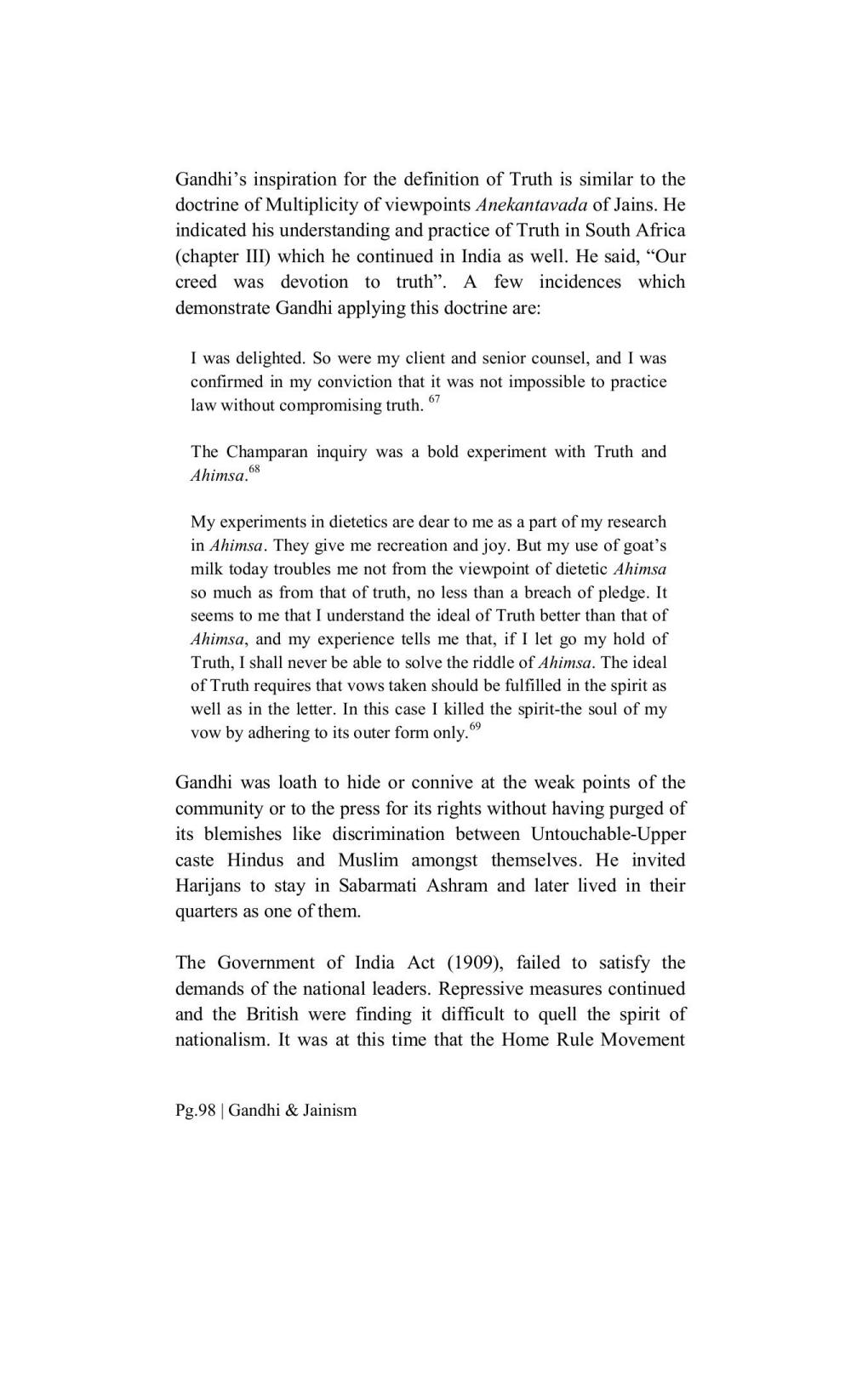________________
Gandhi's inspiration for the definition of Truth is similar to the doctrine of Multiplicity of viewpoints Anekantavada of Jains. He indicated his understanding and practice of Truth in South Africa (chapter III) which he continued in India as well. He said, “Our creed was devotion to truth”. A few incidences which demonstrate Gandhi applying this doctrine are:
I was delighted. So were my client and senior counsel, and I was confirmed in my conviction that it was not impossible to practice law without compromising truth.67
The Champaran inquiry was a bold experiment with Truth and Ahimsa.68
My experiments in dietetics are dear to me as a part of my research in Ahimsa. They give me recreation and joy. But my use of goat's milk today troubles me not from the viewpoint of dietetic Ahimsa so much as from that of truth, no less than a breach of pledge. It seems to me that I understand the ideal of Truth better than that of Ahimsa, and my experience tells me that, if I let go my hold of Truth, I shall never be able to solve the riddle of Ahimsa. The ideal of Truth requires that vows taken should be fulfilled in the spirit as well as in the letter. In this case I killed the spirit-the soul of my vow by adhering to its outer form only.69
Gandhi was loath to hide or connive at the weak points of the community or to the press for its rights without having purged of its blemishes like discrimination between Untouchable-Upper caste Hindus and Muslim amongst themselves. He invited Harijans to stay in Sabarmati Ashram and later lived in their quarters as one of them.
The Government of India Act (1909), failed to satisfy the demands of the national leaders. Repressive measures continued and the British were finding it difficult to quell the spirit of nationalism. It was at this time that the Home Rule Movement
Pg.98 Gandhi & Jainism




